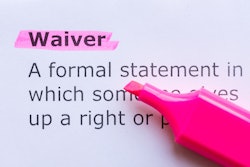
Sometimes it can be a challenge for contractors, suppliers and other parties who furnish labor or materials on construction projects to get paid. This is largely due to the credit-heavy nature of payment in the construction industry. Most parties hired to provide labor or materials do the work before they are paid, which leaves them exposed to financial risk.
Fortunately, there are legal tools in place specifically designed to empower construction participants to secure payment. Mechanics liens provide unpaid construction parties with a stake in the improved property until payment is made for work on private projects. Bond claims serve the same purpose for public projects by providing the claimant with a stake in the surety behind the project. Both tools are extremely effective at helping claimants collect late, unpaid invoices.
How Mechanics Liens Help Secure Payment on Construction Projects
Rewards
The reward for filing a mechanics lien or bond claim is straightforward: getting paid. A recent survey performed by zlien found that 64% of lien claims resulted in payment within 60 days without any further action needed.
What Do You Need to Know About Construction Lien Waivers?
Another benefit of mechanics liens and bond claims is that they are relatively low cost. Filing a claim is significantly less expensive and requires fewer resources than hiring an attorney and filing a lawsuit or involving a third-party collections agency. Additionally, the timeline of the lien or bond claim process tends to be shorter than that of a lawsuit, which might drag on indefinitely.
The rewards associated with lien and bond claims is straightforward; the risks are more complex. However, most of the following risks can be mitigated with the following tips, best practices and means of avoiding excess risk when securing payment.
Risk #1: damaging customer relationships
A common fear among claimants is that filing a lien or bond claim will damage their relationship with the customer. On the one hand, this is a valid concern. Some claimants do abuse lien and bond claim rights and the customer has fair reason to be upset.
On the other hand, if a contractor, supplier or other party is at the point of filing a lien or bond claim, they have likely been wronged by the party making payment. If this is the case, the risk of damaging customer relationships when filing a claim is reduced.
There are, of course, some gray areas that might result in late payment. Another subcontractor might have performed unsatisfactory work which is being disputed and is holding up the project. Maybe a subcontractor isn’t paid on time because the general contractor is still awaiting payment.
It isn’t always possible to clearly evaluate the potential impact a lien or bond claim might have on a business relationship, but here are a few tips that can help guide claimants toward securing payment without damaging relationships.
Do this:
- Communicate often with with the customer about payment prior to filing a claim.
- Send preliminary notice if it’s required, and even if it’s not.
- Provide fair warning by sending a notice of intent to lien to everyone affected by the claim (typically the property owner and the general contractor).
Not this:
- File a surprise lien or bond claim.
- File a claim prematurely without giving others a fair chance to resolve the issue.
Risk #2: the claim doesn’t result in payment
Another common concern associated with filing lien and bond claims is that they will be ineffective. This risk is not exclusive to lien and bond claims; it is always possible that any collections method might not succeed.
Fortunately, mechanics liens and bond claims have a very high rate of success. zlien found that 64% percent of claims are paid within 60 days, which leaves only 36% requiring further action.
For claims that fall in this 36%, there are several follow-up options, each of which presents is own risks and rewards.
Enforce the claim in court
Lawsuits can be time-consuming and expensive. It is not uncommon for attorney’s fees and other court costs to end up costing more than the value of the debt owed. Fortunately, most states’ lien statutes include a provision that claimants are reimbursed for attorneys fees and/or court costs upon successful foreclosure in addition to the original debt owed.
Engage a collections agency
The fee for a collection agency can be steep, and many agencies won’t accept a debt they deem "too small". However, agencies often only take a cut of the debt if it is successfully collected, which minimizes risk.
Let it be
The obvious risk of taking no further action is that the payment is never received. However, sometimes relying on luck and communication is enough to get the claim paid. It is also important to note that some states require claimants to release expired lien and bond claims.
Here are some tips on how to avoid an ineffectual claim.
Do this:
- Be proactive — it is more effective to take precautionary steps to preempt non payment than it is to save the problem once it has occurred.
- Send preliminary notice before payment is due.
- If you choose to enforce the claim in court, make sure to do so before it expires. Check your state’s enforcement deadline.
Not this:
- Wait to take action until after payment is due.
Risk #3: the claim is invalid
Most states require that claimants send some sort of preliminary notice in order to secure lien rights. These documents are typically sent near the start of a project, long before a payment problem actually arises. Failing to send a required preliminary notice on time can limit or invalidate a lien claim, so it’s best practice to be familiar with the lien laws that apply in the state a project is located.
A good way to avoid this problem? Send preliminary notice on every project.
There are many easy steps to ensure that your lien or bond claim will be valid.
Do this:
- Know your state’s requirements.
- Send all documents required to secure lien rights (such as preliminary notice or notice of intent to lien). Pro tip: send these documents even when they aren’t required.
- Know your state’s deadlines for sending notice, and for filing or enforcing a lien or bond claim.
- Check to see if any documents been filed by other parties that affect your requirements. For example, notice requirements sometimes depend on whether a notice of commencement has been filed.
Not this:
- Neglect sending notice.
- Fail to secure lien rights by sending notice late.
- Fail to enforce a claim before it expires.
Nate Budde is the CLO of zlien, an online, lien rights management platform. Nate manages and oversees the Lien Genome and zlien’s products, processes and resources, writes for the Construction Payment Blog, protects zlien’s interests and intellectual property, and performs general counsel duties.



















